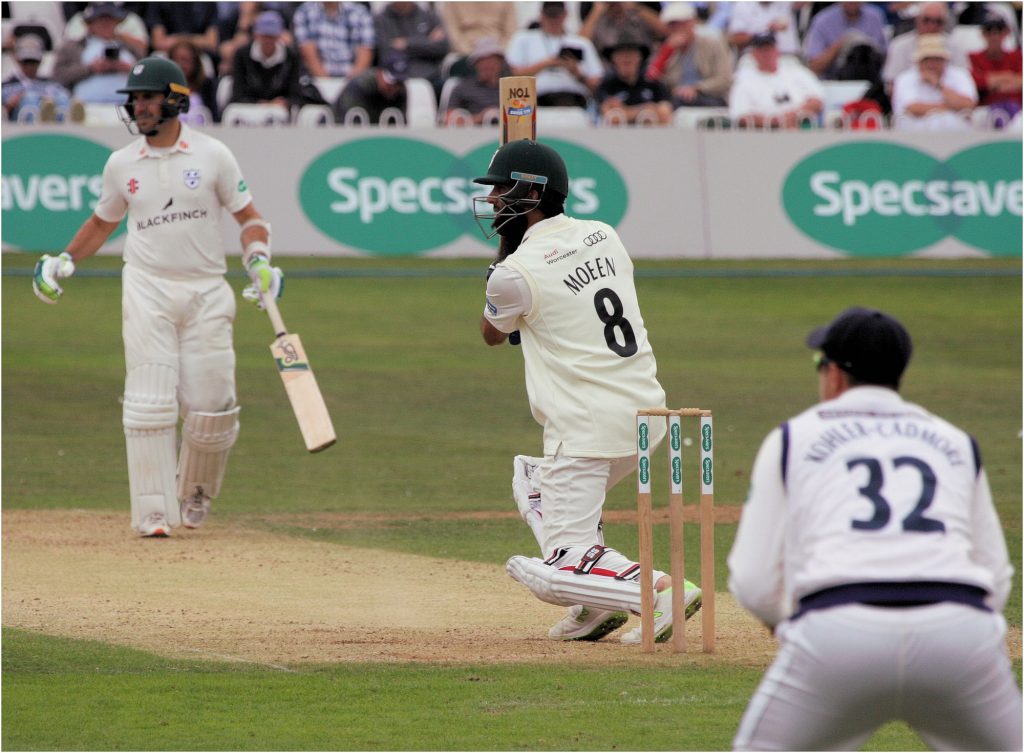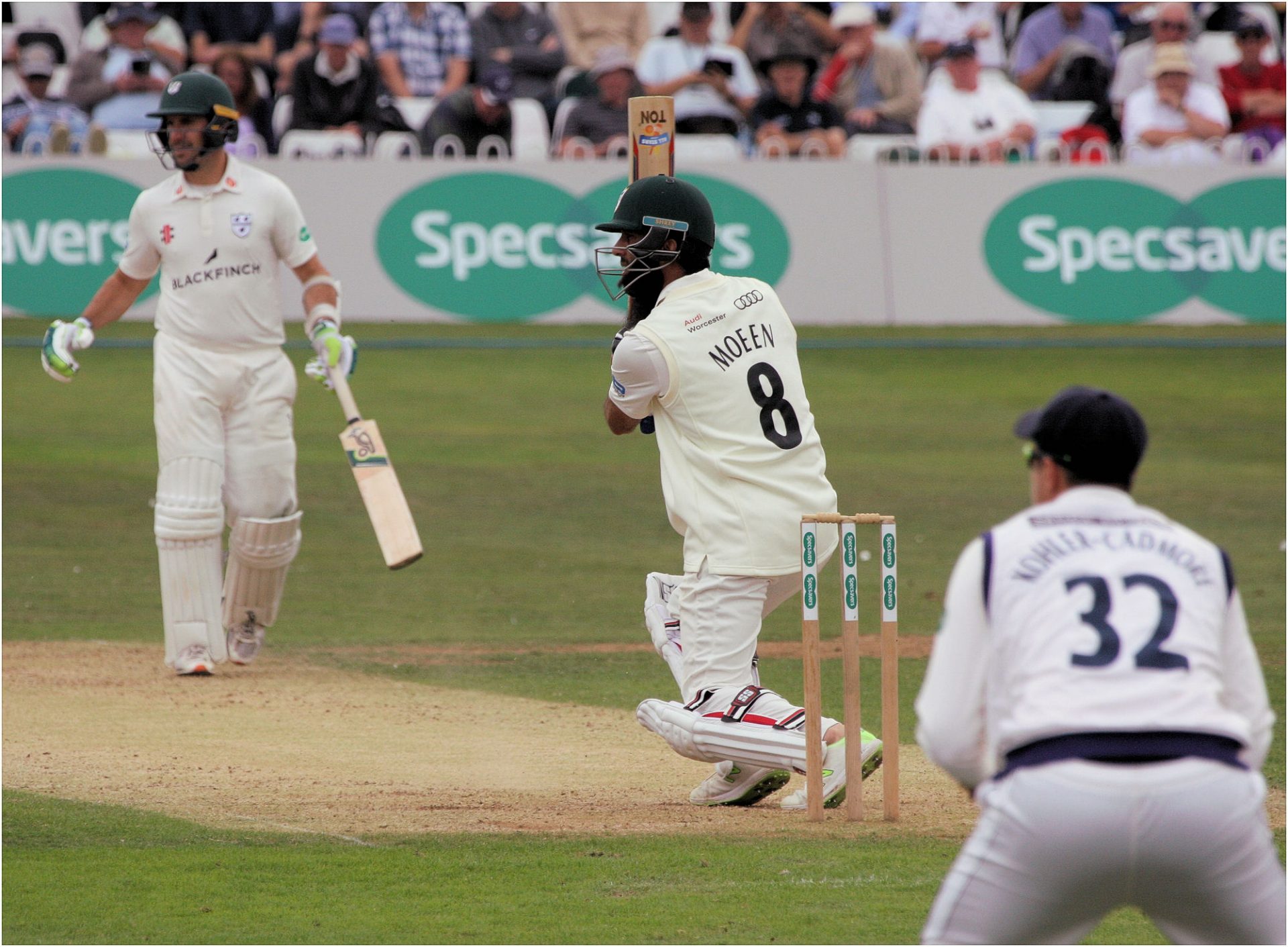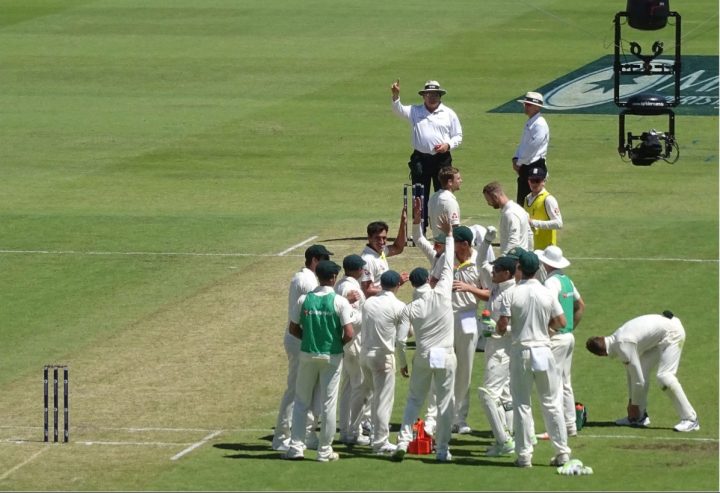For a sport consumed by a desperately sad race scandal, it’s easy to forget the outstanding contribution that black and Asian players have made to England’s test side. In light of recent events their achievements seem all the more remarkable given the routine provocation they must have faced. To wear three lions on their chest should be the pinnacle for any English cricketer. But how much harder must it have been for the pioneers – the multi-cultural lions who first broke down the barriers?
The first Asian player to represent England was the splendidly titled Kumar Shri Ranjitsinhji, later His Highness The Jam Saheb of Nawanagar. Ranji made his test debut against Australia during the Ashes in 1896. He was the first of two Indian princes to represent England and set a number of records during that first match at Old Trafford. He became the second batsman after W.G. Grace to score a century on his debut; and was the first player to score a hundred before lunch. Ranji compiled an unbeaten 154 but could not prevent a three wicket defeat. It was the first of 15 test appearances which at the time was quite an achievement as selectors were fond of experiment.
For Ranji it was a towering achievement in the late Victorian era when the British Raj was at its peak. His selection for England was unsurprisingly controversial and polarised opinion. An impressive first season for Sussex put him in contention for a place in the Ashes series. However, the MCC Committee omitted him for the first Test at Lords. A decision probably influenced by Lord Harris who had just returned from a period of colonial duty in India. Ranji continued to play well and found support for his inclusion in the press. A different Committee was responsible for selection in the 2nd Test and he was placed at number 3 in the batting order.
Nevertheless he felt bound to seek the blessing of Australian captain Harry Trott. Ranji would only play if the Australian team had no objections. Trott happily agreed, but there was no reason for him to do otherwise. Unlike England the Aussies already had a precedent. In January 1885, Samuel Morris opened the innings for Australia against England in his only test appearance. Morris was born in Tasmania to West Indian parents and became the first black Test cricketer.
Ranji enjoyed a spectacular test career and more than earned his reputation as a stoke playing big-hitter. With a batting average of almost 45 he recorded a top score of 175 against Australia in 1897. He did so while still recovering from a bout of quinsy (severe tonsillitis). The stoical Jam Sahibs of Nawanagar had another cricketer lurking in their gene pool. Ranji’s nephew Kunwar Shri Duleepsinhji was an immensely talented batsman whose career was cut short by illness.
Like his uncle Duleep played for Sussex and had a nifty line in dazzling stroke play. He made his test debut against South Africa in 1929 and compiled an impressive average of 58 in 12 tests; among the highlights was a scintillating 173 against Australia in 1930. The Cambridge Blue scored over 15,000 runs in first class cricket despite regular bouts of sickness. He once scored 333 runs in five hours against Northamptonshire and topped the county averages for six consecutive seasons. Sadly, Duleep was forced to retire from cricket at the painfully young age of 27. Ill health had robbed England of a fine batsman just approaching his peak.
Iftikhar Ali Khan Pataudi had the rare distinction of playing Test cricket for both England and India. He was crowned the Nawab of Pataudi in 1931; that very same year at Oxford University he scored 1,307 runs with an average of 93. He later joined Worcestershire and gained selection for the Ashes tour of Australia in 1932/33. It was the infamous Bodyline series and Captain Douglas Jardine’s aggressive use of leg theory. In the first Test at Sydney he scored 102 in a 10 wicket victory for England. However, he famously defied Jardine and refused to take up position in the leg side field. The captain acidly observed ‘I see His Highness is a conscientious objector’ but Pataudi had made his point. He was dropped after the second Test and appeared once more in 1934. Whilst Pataudi was an outstanding cricketer his impact was more prosaic. He became the England team’s conscience during the Bodyline tour, which obscured his more obvious talent.
The post war years were a lean period for black and Asian players at county level, which made their chances of representing England an even more remote prospect. It was nothing new in the domestic game and the barrier was broken early. Aside from the Indian trio, Charles Ollivierre became the first black player in county cricket from 1901. The native of St Vincent enjoyed a six year career with Derbyshire compiling a top score of 229. However, progress was slow in the 20 years following the end of World War II.
Ron Headley moved to England aged 11 and became the second of three generations to play Test cricket. Good genes were assured as son of the legendary George Headley. The Jamaican born opener had a long and distinguished career at Worcestershire. He was awarded his county cap in 1961 and went on to score 21,000 first class runs. Headley was eligible to play for England and his father discouraged him from opting for the West Indies. Headley Snr felt players were treated badly by the West Indian Cricket Board. Nevertheless, Headley Jnr’s only test appearances were for the West Indies in 1973.

The next major milestone arrived in 1966 when Basil D’Oliveira was selected for the 2nd Test against the West Indies. A 44 test career was overshadowed by apartheid and the crisis triggered by his selection. Dolly was born in Cape Town with Indian-Portuguese heritage and became the pawn in a stormy political debate. But another taboo had at least been broken and challenged. The 1970s were a fractious time for cricket and sport in general as the poison of apartheid seeped through. Rugby was dogged by the British Lions tour of South Africa in 1974; two years later the Montreal Olympics was boycotted by 28 African nations. Action triggered by the All Blacks tour of South Africa was proof that political statements could be made through sport; but apartheid continued for another 20 years.
As the 80s dawned, Middlesex had a trio of players ready to take up the cudgels. Roland Butcher was born and raised in Barbados and made his county debut in 1974. He quickly proved an excellent middle order batsman, fielder and occasional wicket keeper. Butcher made history in March 1981 when he became the first black player to represent England at Test level. Ironically, his debut came at Georgetown, Barbados. Local media playfully made the most of it as headlines beamed ‘our boy, their bat’. Despite his aggression and ability Butcher’s test career was brief. In 3 Tests he averaged only 14 with a top score of 32. Inconsistency would cost him dearly but he will always be the ‘first’.
Norman Cowans’ career trajectory followed a similar path to Roland Butcher but enjoyed a much longer Test career. Born in Jamaica he quickly emerged as a pace bowler with raw power. He was selected for Ashes tour of 1982-83 but his inexperience was obvious. Captain Bob Willis could be seen pacing out Cowans’ stride pattern during a match; but on-the-job-training soon paid dividends. Flash hit devastating form when he took 6 for 77 in the 4th Test at Melbourne. This performance secured a 3 run victory for England and a man of the match award. However, Cowans was cursed by inconsistency and took only 51 wickets in 19 tests at a costly average of 39.
The final Middlesex player to break the glass ceiling was Wilf Slack. The left handed opener from St. Vincent made his county debut in 1977 but failed to fully establish himself. It was only when Mike Brearley was recalled to the Test side in 1981 that Slack got his chance. He scored a shedload of runs including an unbeaten 248 against Worcestershire. Although he had toured Sri Lanka with England B, it was an injury to county colleague Mike Gatting that would give him his chance at Test level. But a 3 test career would not see Slack capture his county form at international level with an average of 13. His tragically early death at 34 was a shattering blow; but to be buried in his England blazer was a measure of the immense pride he must have felt as an England international.
The mid 80s appeared to be something of a turning point as Gladstone Small and Phil DeFreitas made their Test debut in 1986. They both enjoyed substantial international careers with DeFreitas winning 44 test caps. David Lawrence became the first English born black cricketer to play test cricket for England in 1988. The pace bowler had tremendous potential but his career was ended by a truly horrific knee injury sustained in a game against New Zealand. Devon Malcolm became the ultimate shock trooper and gave rise to the immortal line ‘you guys are history’. During a match against South Africa he delivered the perfect retort after receiving a bouncer from Fanie de Villiers. Malcolm ripped through the South Africans with a devastating 9 for 57.
The following years saw the frequent representation of players with West Indian and Asian heritage. Nasser Hussain and Mark Ramprakash forged successful test careers, but recent times have seen fewer black players make it to test level. Jofra Archer seems to be an increasingly rare exception to rule. One might construct all manner of explanation and racism is central to the discussion. But there is a possibility that young black players might simply choose football over cricket as a more lucrative alternative (although racism is rife in both sports). In contrast, players with Asian heritage are arguably more likely to favour cricket, if and when they make that decision. No assumptions can be made about such a complex subject, of course, but we can conclude that there is still a long way to go.
Brian Penn









“To wear three lions on their chest should be the pinnacle for any English cricketer.” This would seem self-evident however, the contradiction that, it would seem, the majority of Anglo-Asians vociferously support India over England is a conundrum. Presumably the legacy of colonialism and continuing racial discrimination, I suppose?
Very balanced and well written. Thank you.
“Australian captain Harry Trott”.
Trott couldn’t really complain because his brother had switched allegiances from Australia to England. Albert Trott had come into the Australian side with them 0-2 in the Ashes, won two Tests virtually single-handed (including bowling a mammoth spell in an Adelaide heatwave) and when he couldn’t repeat the miracle a third time was promptly dropped. Understandly frustrated, he came to England, qualified for England, played a major role in winning a Test series in SA and became the only man to hit a six over the Lord’s Pavilion. Drink and gambling led to penury and suicide.
“Despite his aggression and ability [Roland] Butcher’s test career was brief”.
Butcher was picked when Botham was captain and wanted ultra-aggressive batsmen. His selection was largely on the back of a 50 in an ODI against an unacclimatised Australia over for the Centenary Test but not on a proper tour. (There’s nothing new…. ). Butcher couldn’t have much harder opponents than Roberts-Holding-Garner-Croft but Gooch, Boycott, Gower and Willey all made runs off them on that tour helped by more placcid pitches than in ’85/86. Butcher had his cheekbone broken by George Ferris in a CC match against Leicestershire which was why his career declined. England also had Gower, Lamb, Randall and Gatting in the middle order. Sorry if that spoils any victimhood narrative.
There definitely was a nasty undertow to some of the commentary around the time Malcolm, DeFreitas and Lewis were England fixtures. Defeat often seemed to be accompanied by insinuations of not trying hard enough – not mishandling (especially of Malcolm), strong opposition or limits of talent or temperament that anyone could have. However they all were selected on plenty of occasions and can hardly be said to have been excluded in that way – but that doesn’t seem to stop some people blaming Ramprakash’s problems on the selectors despite over 50 caps.
Great article that Brian, really enjoyed it.
If we’re going to have Lions tours why not do like this one where they tour the same country as the England team simultaneously. This would help both side sides keep their reserves in competitive mode. Just pick an overall squad of 25-30 players and move them between squads as and when form or injury dictates, especially in these Covid times where there’s precious little warm up opportunity.
Brian
A very interesting article but why the default to racism in your final paragraph, and in Chris’s post?
Coincidentally, in the year Lawrence made his England debut, Chris Oti became the first black rugby player to be selected for England in modern times and the England soccer team had but two black players. Now, black players are over represented in relation to the overall population in both the rugby and soccer squads, which begs a number of questions in relation to cricket.
I have long been of the opinion that more players have been deprived of England caps on the basis of class (and the associated issues of geography and education) than on the basis of race. The distinction between Gentlemen and Players, for example, formally ended only in 1962. Players took the field by a different route – at Lord’s via what is now the Bowlers Bar – to Gentlemen, even when they were in the same team, and they were described differently on the scorecard. No English cricketer suffered such indignities based on race, even though the first race relations act wasn’t introduced until 1965.
The key question for me is ‘is the sport open to all’ and that surely must be the objective. If it is, and certain groups choose not play it, even though previous generations did, that is their choice, regrettable though it may be but those choices at grass roots level will be / are being reflected at County and National level.
John
You make a good point re: default to racism in my final paragraph. I tried to focus on players’ achievements, but unconsciously slipped as the theme driving the piece was always at the back of my mind. As you and others have pointed out it’s a complex issue where race isn’t the only factor at play.
Indeed. I thoroughly enjoyed your piece.
Tymal Mills would almost certainly have played tests were it not for his back problems.
I thought Chris Jordan would become a test class quickie, but his skills were more in the OD especially the T20 game.
Daniel Bell-Drummond was/is another excellent prospect who has not kicked on.
Interest in cricket is declining gradually across all sectors of society, and those youngsters who do make it at professional level often prefer the OD stuff. Look at some of our most promising young batters- Livingstone, Salt and Banton to name but three off the top of my head. They prefer whacking it as hard and as often as possible rather than grinding out runs at fc level.
It is entirely legitimate to critique reasons as to why various communities may of lost interest in cricket and racism, perceived or otherwise, needs to be addressed. That said maybe cricket just isn’t that popular anymore, at least the red ball type. And the 100 is hardly going to change that…..
And that grass roots decline of the game is really the heart of the problem. While racist attitudes have impacted English cricket in the past there are plenty of examples of black, mixed race or Asian players who had regular places in the Test team from D’Oliveira onwards. English crickets current problems run a lot deeper than just an absence of ethnic minority players. The whole structure of the sport, the way the seasons calendar is constructed and the way the game is presented to the public via the media needs to be radically overhauled . In particular the administrators need to come up with a settled formats for the game rather than constantly tinkering with it. It is hardly surprising that football and rugby attract bigger audiences as the fans essentially know what type of game they will be watching from season to season and when they are going to be played. The same cannot be said for English cricket with its ludicrous flip flopping between different limited over formats and its constant rejigging of the first class schedule. It is hardly surprising the game is in decline when the brand seems to change from season to season. Who wants to invest time and money in a sport which essentially does not believe in itself.
Hugh.. be honest.. people aren’t going to invest in white ball long term as fans.. Who on Earth is going to keep playing year on year 100/2020 or ever reducing saturday cricket?? aka, participation will keep dropping like a stone.
Who is going to keep paying Sky/BT subs for franchise 2020 and other white ball games??? answer is fewer and fewer people… so now your income from tv is dropping too..
Sure, evenings out for beer heads is great at a 2020 but again.. you aren’t going to keep cricketers paid well like that AND…. eventually more than 1 game a week will see reduced beer heads… so now your income reduces but outgoings increase… aka.. less money.
White ball feels great I’m sure but it is killing professional and amateur cricket.
Amateur cricket has a mentality for some reason that whit eball and ever shorter win lose games are great… then wonders why the level of skill is lowering year on year and the participation is lower and lower too… It really isn’t rocket science and yet you all seem to think a few random other players, coaches, minority players will suddenly fix things…
it’s tiring for the last 10 years to argue this against such constant white ball loving.. Sadly, it is slowly dawning on people that red ball and skill levels are dire at pro and amateur levels but they / you are brainwashed to ‘love’ white ball now… intent.. positive cricket…. pressure on the bowler.. play your own way… busy cricketer….
Thanks for an enjoyable read. Norman Cowans was a terrific bowler who would have taken 200+ Test wickets had England not messed around with his action and turned him into a medium pacer because they thought he was too wild and expensive. As for what we did to Jofra, running him into the ground in less than two years by forcing him to bowl 8-over spells, it’s just criminal. I’ll be amazed if we ever see him play another Test.
Roland Butcher would probably have played more for England has he not had his cheek smashed in by George Ferris. It destroyed his confidence and damaged his sight. He was never the same player again. Another decent black player from that era who I really enjoyed watching was Monte Lynch. He wasn’t quite Test class but played 3 ODIs I think. He was a fearsome hitter of a cricket ball though, I remember seeing him make a quick 50 in the JPL against Hampshire when I was a kid, with one six soaring over my head.
Owais Shah was another black player who I thought deserved more of a chance. I’m sure there would be others if I thought longer. Thanks for triggering the grey matter. Shame it also made me remember Aftab Habib and Usman Afzaal, who were terrible…
Is this Bizzaro World? In what parallel universe does one have to be living to assert that Mark Ramprakash had a successful England career? Admittedly Ramps always did well against Australia but this wasn’t from a large sample size. The same for Daffy and the others – there was the odd highlight but overall they were failures at test level. The fact is since dear old Dolly no English ethnic minority player has been able to cut it consistently at test level. And they have been indulged way beyond their ability – how else do you explain the lamentable Hameed being selected to tour Australia? Also, it is very comical to have Moeen Ali commenting on England’s batting travails after his last pathetic tour here in 2017/18. Having just sat through the inept England batting display at Melbourne this morning it is obvious you guys have much bigger issues to address in your game than worrying about ethnic representation. The bulk of the players mentioned in this article were promoted far beyond their actual ability and are merely footnotes in the history of the game. Best to move on.
Ramps did have a successful County career.. He was just not good enough to play test cricket really and isn’t a very good coach either. He’s stolen a living off england for both playing and coaching and any other school/club or county employing him is also enabling him to steal a living sadly.
Enjoyable article thank you. Perhaps Raman Subba Row is worth a mention. 13 tests opening the England batting between 1958-1961, finishing with an average of 46.85. Unfortunately retired with on the face of it so much more to offer.